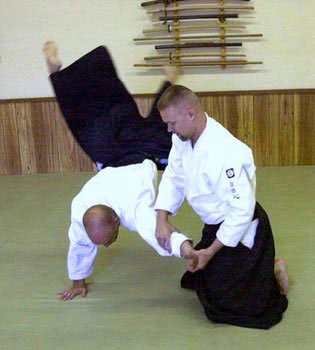



|
Last issue I was trying to get across what I think Leggett meant by "live vs. dead" movement in budo training. By the way, I encourage everyone to discover the wide range of interesting subject matter that Trevor Legget wrote about over the years. His life story is as interesting as his books in many respects. I wrote about intent being necessary. What sort of intent do I mean? Surely we all have some intent all of the time. Probably true (well, there are some of us that don't seem to have an abundance of any intent at times....) but it is important to have the intent that matches the action you want. Simple actions, like picking up a cup of coffee, are not hard to match with intent. However, there are lots of things we do that are not that simple for us. Motivation, old memories, and habitual behavior patterns can be tied into fear and |
| it's various forms such as insecurity that shows up when we try to learn something new. Some of us have deeply rooted feelings of inferiority or even very subtle self-destructive tendencies that affect our learning and practice. Most of us don't like it when others see us when we aren't at our best. For example, this fear will cause us to be tense and uncommitted in our physical movements. Until we feel confident and at ease with our performance we often won't really commit a hundred percent. Until we can match our intent with total committment in our practice we find it hard to relax and achieve live movement. |
Two young shodan in the old Oka Dojo having a great time during judo randori. Brian has caught Aaron with a footsweep that was so committed that if he had missed, there would surely have been a counter that would have dumped him! Live movement at it's peak. |
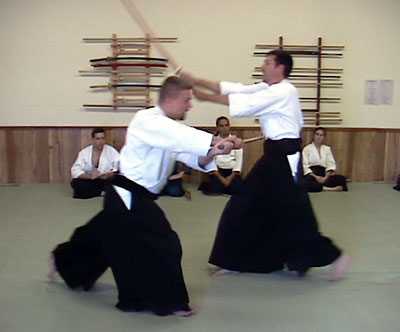 |
|
| We may think we have the intent to do a kote gaeshi at the right time in our Ju Nana Hon Kata, but we often have other things in our intent that cause us not to be able to really actualize our true understanding of the kote gaeshi. We may be thinking: "I hope this works," or "I can't ever get this right," or "I wish practice was over, or even something unrelated to practice. Instead, we should be focused and thinking about posture, movement, target, distance, and timing. Just this. Right now. After some time, we aren't even thinking consciously about these sorts of things. We're adding all of that stuff together and now we're thinking about taking balance at first touch and feeling/listening to what uke's reaction to our kuzushi is, so that we can make the next creative adjustment in the dynamic cycle of technique. |
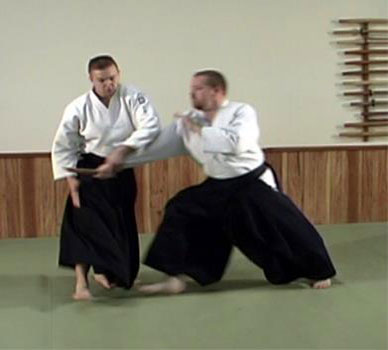 |
| This practice is a process that has no end, a journey that is really made up of the scenery along the way rather than the destination. Many of us have such a strong picture of the finish of the technique that we cannot and do not pay attention to the parts that make up the whole. Our movement is dead because things are not working properly and our system feels that and becomes tense and analytical to try and figure out what to do about it. |
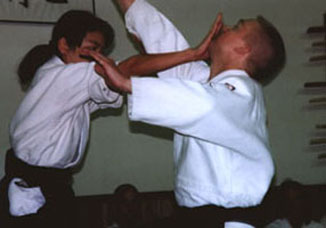 |
In short, do one thing at a time until you can do some of them together as if they were one thing. Then add one more thing, etc., etc. Confidence will build and relaxation will happen. If our attention to detail has been developed with good principle, things will fall into place and we'll be practicing with live movement. At some point we can even keep the live movement when we're learning something new. |
|
In the photo above, Yoko Sato is full of live movement and intensity as she connects with shomen ate on Aaron Clark's chin during a Shochugeiko practice. You can also see the intent in Aaron to stay dangerous as long as possible and continue the attack if he could get his posture under control. Full of "connection" and taking part one hundred percent. |
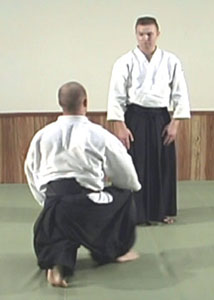 Notice
the paradox represented in the photo at the right of live movement
while still. The liveliness is in their intent and well-balanced
posture. Focused and just doing one thing at a time, these two
budoka seem frozen in time. Notice
the paradox represented in the photo at the right of live movement
while still. The liveliness is in their intent and well-balanced
posture. Focused and just doing one thing at a time, these two
budoka seem frozen in time. |